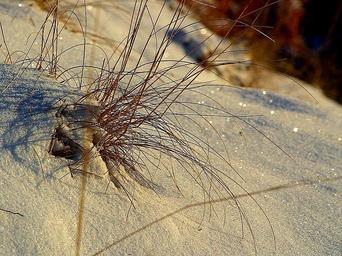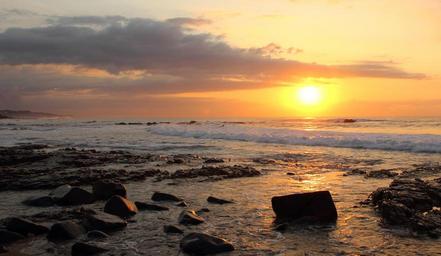Introduction
Art is a profound medium through which emotions, thoughts, and narratives are expressed. One of the most significant elements in the creation of visual art is contrast. In this article, we will delve deep into the impact of soft vs sharp contrasts in art, exploring how these contrasting styles influence aesthetic appeal and emotional resonance.
Artists have long played with various forms of contrast to evoke feelings, highlight themes, and create memorable pieces. From fine art photography to moody photography, each approach offers unique perspectives that enhance our understanding of visual storytelling. Understanding these contrasts can enrich not only an artist's practice but also a viewer's appreciation.
The Essence of Contrast in Art
What is Contrast?
Contrast in art refers to the difference between two or more elements within a composition. This can be achieved through color, texture, value, shape, and even subject matter. In photography, for instance, contrast can manifest through light and shadow or through variations in color saturation.

Why is Contrast Important?
- Emphasis: It draws attention to specific areas or subjects within the artwork. Mood Creation: Different types of contrasts can evoke various emotions—soft contrasts often convey serenity while sharp contrasts can elicit excitement or tension. Visual Interest: By incorporating varying levels of contrast, artists can maintain viewer engagement throughout their work.
Exploring the Impact of Soft vs Sharp Contrasts in Art
When discussing soft versus sharp contrasts, one must consider how each type influences perception and meaning.
Soft Contrasts: The Gentle Touch
Soft contrasts typically involve subtle differences between colors or tones. They create a harmonious feel that can evoke calmness and serenity.
Characteristics of Soft Contrasts
- Gradual transitions between shades Low saturation levels Blurred edges
Examples in Photography
In genres like ethereal photography or contemplative photography, soft contrasts allow for dreamy images that invite viewers into a serene world where time seems to stand still. Think about landscapes shrouded in mist or portraits illuminated by diffuse light; they embody tranquility.
Sharp Contrasts: The Bold Statement
On the flip side, sharp contrasts feature stark differences that https://mindchronicles595.fotosdefrases.com/creative-display-techniques-for-eclectic-art-collections command attention.
Characteristics of Sharp Contrasts
- Bold color differentiation High saturation levels Well-defined edges
Examples in Photography
Genres such as black-and-white photography often utilize sharp contrasts to emphasize form and structure. A dramatic image captured during a sunset could showcase vibrant oranges against deep blues—demanding attention and evoking strong emotions.
The Emotional Palette: How Contrast Influences Feelings
Interpreting Emotions Through Soft Contrasts
Soft contrasts often elicit feelings of peace and introspection:
Calmness: The gentle transitions create a soothing visual experience. Dreamlike Quality: Ethereal scenes invite contemplation. Timelessness: Soft hues often feel classic and enduring.Interpreting Emotions Through Sharp Contrasts
Conversely, sharp contrasts invoke different emotions:
Excitement: The boldness captivates attention instantly. Tension: High contrast images may stimulate unease or drama. Vibrancy: Bright colors energize the viewer’s experience.Techniques for Achieving Contrast in Art
Photographic Techniques for Soft Contrasts
Incorporating soft contrasts effectively requires specific techniques:
1. Utilizing Natural Light: Shooting during golden hour provides gentle illumination. 2. Post-processing Adjustments: Employing tools like Lightroom to soften shadows enhances overall mood. 3. Focus on Color Harmony: Choose palettes that complement rather than clash.
Photographic Techniques for Sharp Contrasts
To achieve striking imagery using sharp contrasts:
1. High Dynamic Range (HDR) Imaging: This technique captures multiple exposures for rich detail. 2. Backlighting Techniques: Using light sources behind your subject creates dramatic silhouettes. 3. Monochrome Approaches: Black-and-white photography thrives on stark light variations.
Different Mediums: Impact on Contrast Perception
Painting: The Canvas Playground
In paint mediums such as oils or acrylics, both soft and sharp contrasts find expression through brush strokes and layering techniques.
Soft vs Sharp in Painting
- While watercolor lends itself well to soft transitions due to its fluid nature, oil paints allow artists to create vivid details with pronounced sharp edges.
Digital Art: Versatility at Its Best
Digital platforms provide unique opportunities for manipulating contrast:
Benefits of Digital Manipulation
- Artists can seamlessly switch between soft and hard elements within a single piece. Tools enable precision adjustments that may be challenging with traditional methods.
The Role of Context in Perception
Understanding how context influences perception is crucial when examining contrast:
Historical Context
Throughout history, artistic movements have varied greatly in their use of contrast based on cultural significance:
Romanticism: Often embraced softer palettes symbolizing emotion. Modernism: Frequently utilized bold contrasts to challenge norms aesthetically.Contemporary Context
In today’s digital age, artists blend traditional techniques with modern technology—creating hybrid forms that play with both soft and sharp contrasts simultaneously!
Case Studies: Notable Artists Who Mastered Contrast
Examining renowned artists who skillfully wielded contrast helps illustrate its impact effectively:
Claude Monet: The Master of Softness
Monet’s impressionistic style emphasizes the beauty found within subtlety—his water lilies series showcases how delicate hues blend harmoniously while retaining emotional depth.
Ansel Adams: Championing Sharp Details
Adams revolutionized landscape photography utilizing high contrast black-and-white images that reveal intricate textures—the sheer grandeur captured resonates powerfully even today!
Impact on Viewer Experience
Understanding how viewers respond to different types of contrast is vital for any artist:
Engagement Levels
Research indicates varying responses based on visual stimuli—sharp images spark immediate interest while soft visuals foster deeper reflection.
Creating Your Artwork with Intentionality
As you embark on your own artistic journey exploring these concepts remember:
Define your message clearly before selecting appropriate contrasting techniques! Experimentation is critical—don’t hesitate trying out combinations!FAQs about Soft vs Sharp Contrasts
What are soft versus sharp contrasts?- Soft contrasts feature gentle transitions whereas sharp contrasts display stark differences between elements.
- Consider your intended emotional response; if you want calmness go for softness but if you seek energy opt for sharper lines!
- Absolutely! Many contemporary artists blend both styles creating dynamic compositions full of intrigue!
- Color choice significantly impacts perception; muted colors enhance softness while vibrant hues heighten intensity!
5. How has technology influenced contemporary approaches toward contrast?
- Digital tools allow unprecedented manipulation capabilities enabling seamless integration between soft & hard elements effortlessly!
6. Is there cultural significance tied into contrasting styles?


- Yes! Various cultures have historically favored certain types based upon prevailing philosophies & aesthetics influencing artistic expression greatly over time!
Conclusion
In conclusion, exploring the impact of soft vs sharp contrasts in art unveils an intricate tapestry woven from emotion, technique, history, and culture alike! Whether you're an aspiring artist seeking inspiration or simply an admirer looking deeper into visual storytelling—you'll find endless possibilities awaiting discovery!
Embrace experimentation as you navigate this captivating realm where artistry meets perception—a space where every image tells its unique story guided by the nuanced interplay between softness & strength!